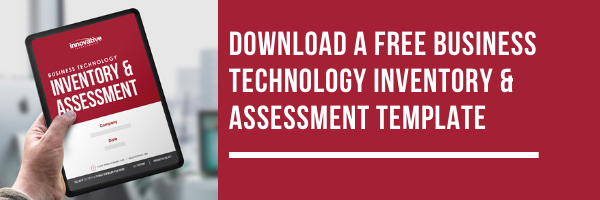Why Your IT Company Should Also Be Your Copier Company
Technology Strategy | Devices | Outsourced IT Support | Printers & Copiers
Do you know how much your business spends on print and copy expenses?
If the answer is no, you are not alone. According to a Gartner Group study, 90% of businesses lack an understanding of the total financial impact of printing and copying.
The two biggest reasons for this lack of clarity are:
- Printing and copying expenses are often split between office equipment costs and office supply expenses.
- Printers and copiers are often managed separately yet used interchangeably.
Considering the average employee prints 34 pages per day at a cost of around $725 per year per employee, printing and copying expenses are typically the third greatest business expense behind payroll and rent.
A Brief History of Office Printing and Copying
In 1959 Xerox introduced the first commercially available copier, the Xerox 914, and forever changed the speed at which information could be shared. With offices now able to share information through copies, copying boomed with Americans making 14 billion copies per year by 1966.
Commercially available laser printers became available in the late 1970s, but it wasn’t until offices began to replace typewriters with personal computers throughout the 1980s that printers became the next logical step in the progression of office technology.
By the 1990s the reduced cost of printers made them an appealing choice to improve workplace efficiency and privacy regulations began requiring sensitive information be printed in more secure, limited access areas. So, companies began adopting individual printers to supplement centrally located copiers.
Through the early 2000s, office networking technology continued to improve and shifted the focus of printing and copying technology back to a centralized environment, focused around the multi-function printer/copier, or multi-function device (MFD), that typically provides the ability to print, copy, scan, and/or fax. However, with the even lower price of individual, desktop printers, many employees retained a personal printer for convenience and information security.
In this modern office environment, businesses typically have a good handle on the printing and copying activity conducted through the central MFD but have little knowledge or ability to conduct accurate data analysis on the amount and cost of printing to the individual desktop printers.
How can businesses maintain flexibility and information security offered by local printing while controlling print and copy costs?
Copying and/or printing to a multi-function copier is the most cost-effective means of printing and copying but can add other costs. Employees who print frequently may have decreased productivity if the centralized printer, copier, or MFD is located farther away from those employees’ work areas. Additionally, departments like human resources and accounting may create security risks when printing sensitive information and secure documents.
The most effective modern office environment most likely includes both centralized MFDs and local networked printers that are all monitored and managed through a comprehensive managed print and copy solution.
While copier companies have historically been involved in only large copier and MFD activity, the greatest value comes from vendors with the capacity to act as a complete strategic technology partner to your business.
A strategic technology partner offers:
- An understanding of your business and industry security and compliance requirements. Printers and copiers present their own security risks, your IT department and/or IT vendor should understand the requirements specific to your business and make printer/copier recommendations accordingly.
- Monitoring and evaluation of all print and copy activity, including both MFDs and individual printers. This data allows your technology partner to offer advice on where and what printing and copying devices will offer the greatest opportunities for efficiency and employee productivity.
- Management of default settings on all networked devices. As your network manager, a strategic partner can remotely manage default print settings on all networked computers and devices to the most cost-effective default print options (i.e. double-sided, black and white, inexpensive paper, etc.).
- Elimination of redundant device support and service. A stand-alone copier vendor often requires support from your IT department or IT vendor. A strategic technology vendor handles both the network and printing and copying devices eliminating redundant support costs.
Using the knowledge of the items listed above, a strategic technology partner can offer a cost-effective, flat rate fee for all printing and copying functions. This flat fee can include any or all of the following:
- Maintenance and support of ALL networked devices (i.e. computers, printers, MFDs, copiers, etc.)
- End user technical assistance
- Device purchasing and/or leasing
- Printer/copier toner and other supplies
Get a better understanding of all of your technology systems with a free business technology inventory and assessment template.

.jpg)

